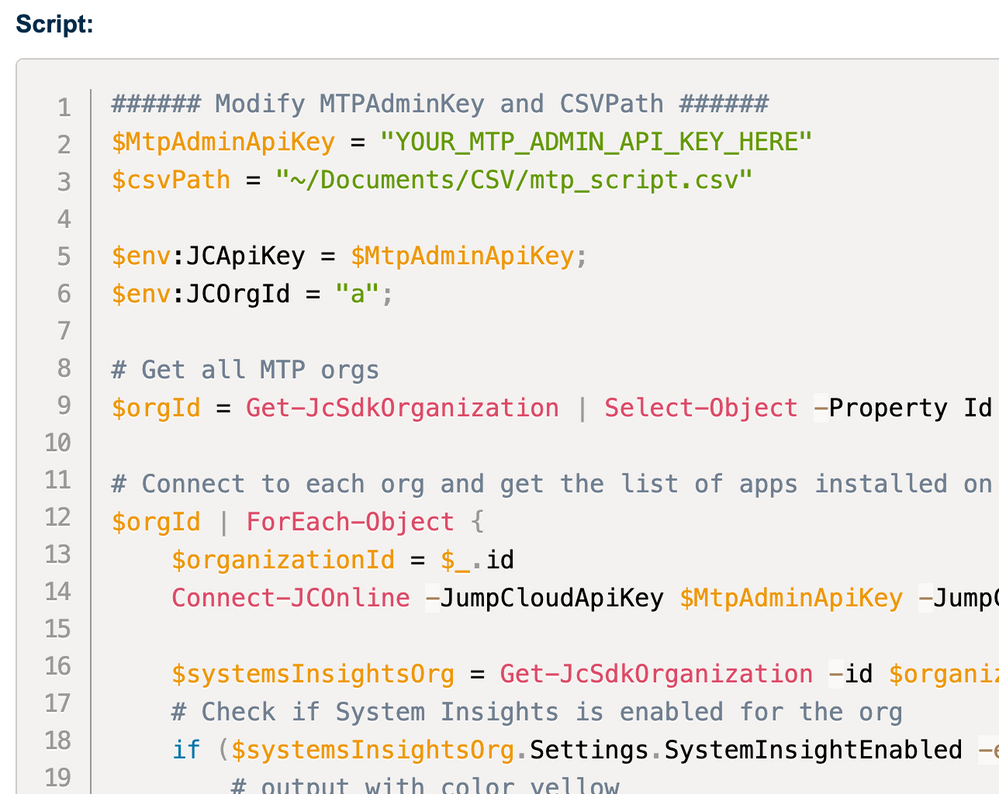Leveraging JumpCloud Alerting to monitor Windows event logs for service crashes
- Mark as New
- Bookmark
- Subscribe
- Mute
- Subscribe to RSS Feed
- Permalink
- Report Inappropriate Content
02-19-2025 03:14 AM
Hello community!
With the new command-execution alert rules, it's easy to set up alerts to monitor the Window event logs for specific events. Here is how you could create a monitoring rule to trigger an alert whenever a service crash occurs. [Even though Windows automatically restarts many services, recurring crashes indicate underlying problems that need addressing]
You can easily change this to get alerted on any other Windows event logs of interest.
Step 1: Create a PowerShell Command
Create a new PowerShell command to check the Windows Event Log. In this example we are monitoring Event ID 7031 (service crashes).
# PowerShell script to monitor for service crashes (Event ID 7031) in the last 24 hours
$StartTime = (Get-Date).AddHours(-24)
$EndTime = Get-Date
# Define parameters for event search
$EventParams = @{
LogName = 'System' # Service crash events are in System log
StartTime = $StartTime
EndTime = $EndTime
ID = 7031
}
try {
# Get matching events
$Events = Get-WinEvent -FilterHashtable $EventParams -ErrorAction SilentlyContinue
# If events found, extract details and exit with status 1 (will trigger alert)
if ($Events -and $Events.Count -gt 0) {
# Extract service names and crash counts
$serviceCrashes = @{}
foreach ($Event in $Events) {
# Extract service name from message using regex
if ($Event.Message -match "The (.*) service terminated unexpectedly") {
$serviceName = $Matches[1]
if ($serviceCrashes.ContainsKey($serviceName)) {
$serviceCrashes[$serviceName]++
} else {
$serviceCrashes[$serviceName] = 1
}
}
}
# Build detailed report
$crashReport = "ALERT: Detected $($Events.Count) service crash event(s) in the last 24 hours on $(hostname).`n"
$crashReport += "----------------------------------------`n"
foreach ($service in $serviceCrashes.Keys) {
$crashReport += "- $service crashed $($serviceCrashes[$service]) time(s)`n"
}
# Most recent crash details
$mostRecent = $Events | Sort-Object TimeCreated -Descending | Select-Object -First 1
$crashReport += "`nMost recent crash: $($mostRecent.TimeCreated)`n"
$crashReport += "Message: $($mostRecent.Message)`n"
# Return details to JumpCloud
Write-Host $crashReport
exit 1
} else {
# No events found, exit with status 0 (success)
Write-Host "No service crashes (Event ID 7031) detected in the last 24 hours."
exit 0
}
} catch {
# Handle any errors in script execution
Write-Host "Error checking for service crash events: $_"
exit 2
}
Schedule this command to run daily, or at the frequency of your choice.
Step 2: Create the Alert Rule
This is where the magic happens with the alerting features! Create a command execution alert rule with these settings:
- Go to Alerts → Alert Rules → + Create Rule
- Select Command Execution Failure rule type
- The most important field to configure is Conditions. For this, select the PowerShell command created above
- Configure the name, description, priority to your liking
Now, whenever the script runs and finds service crashes (exit code 1), it triggers an alert:
Clicking on the alert brings up the details including exit code and output from the script which shows the failing service.
Thanks for reading and happy monitoring!
- Labels:
-
PowerShell







